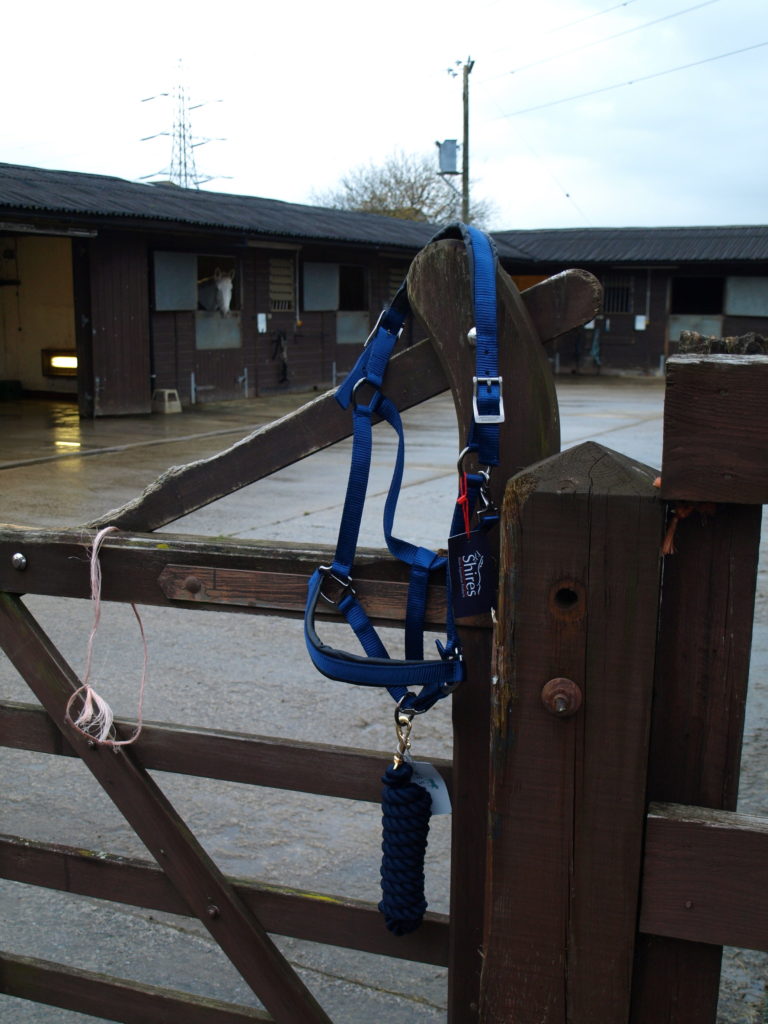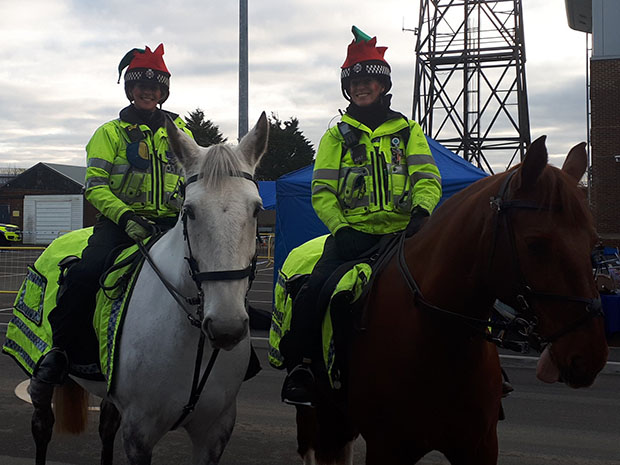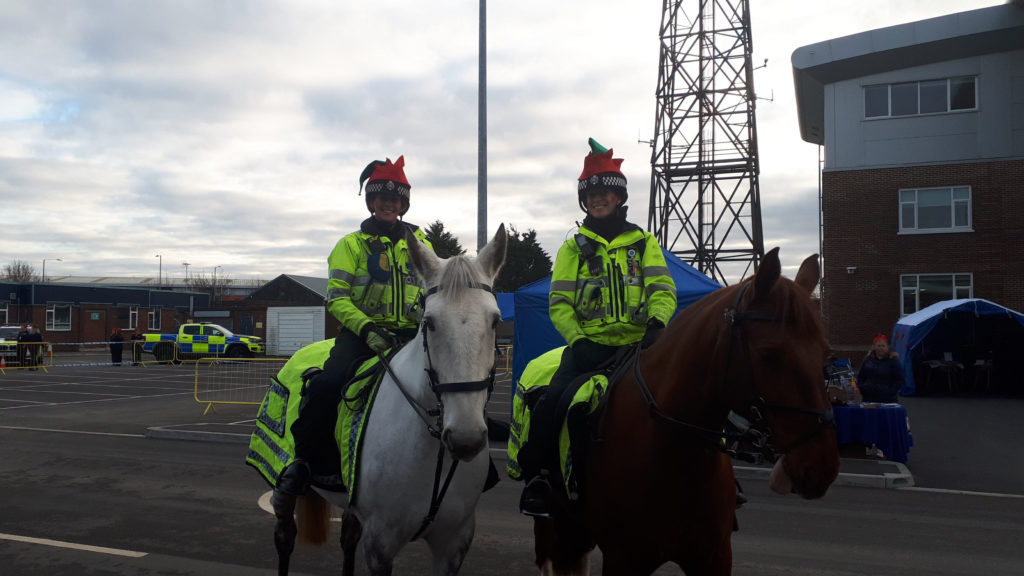
(Photo: SWP)
I notice his hooves first: they’re the size of soup plates and could do some damage. Then I feel a nudge against my cheek. It’s a nose. I look up, craning my neck to meet the big brown eyes. This is Blue: he’s more than two metres tall from the ground to his ears, and he’s a South Wales Police horse.
IN an industrial estate on the outskirts of Bridgend, you will find four paddocks and nine stables belonging to the South Wales Police.
A lot of police training happens here and as I walk past some outbuildings, I notice two men holding guns. Then I see the sign: “Firearms training in progress” and walk a little faster.
Kat Edmonds-Daniel welcomes me to the yard. She is one of the horses’ welfare officers and is responsible for their mucking out, feeding and sprucing up. She often starts work at 5.30am to get them ready for the day ahead.
When people are carving up their Christmas turkey, Kat will be at the yard, bathing her charges in advance of the Boxing Day football matches.
Each horse will then be wrestled into a set of special Lycra pyjamas to keep it clean overnight. These slide on over the ears and fasten with a Velcro tummy-strap: covering everywhere apart from the legs.
When the horses awake on Boxing Day morning, their fur will be smooth, shiny and free of poo stains.
Four police horses can do the job of 20 officers on the ground: an advantage that makes them ideal for crowd control.
“Also, with missing person searches, it makes sense to have the horses when we’re searching woodland because they can get where cars can’t, and cover more ground than an officer on foot,” Kat explains.
She is like the mother to a huge family of boys, as the SWP only have geldings (male horses) in their yard.
“It isn’t a hard and fast rule,” Kat tells me. “But we haven’t found the right mare yet.”
So, what does it take to be a police horse?
They must be over 16 hands high (1.62m), measured to the highest point of their back, Kat explains.
“Just to have that presence really, and obviously one of the advantages of police horses is that mounted officers can see things that officers on the ground can’t. So, a taller horse has that advantage,” she says.
They should be virtually bomb-proof: i.e. not scared of loud noises or sudden movements. Plastic bags and umbrellas are bugbears for many horses, but police horses must ignore these distractions.
“We take them out onto the industrial estate, where they come across roadworks, lorries and tractors. Then we have a drum and we wander around beating it. We also throw tennis balls at them – really gently,” she tells me.
“When we’ve done the crowd control work, we take them on school visits and kids love it because they get to scream at the horses.”
There are five full-time mounted officers who share riding the horses. Some of them come from “horsey” backgrounds, but others hadn’t ridden a horse before joining the mounted section.
A one-month course is available, which covers the basics in riding and stable management.
There are eight fully operational horses in the yard, and one on trial. His name is Hamilton and he came from a private home in Surrey.
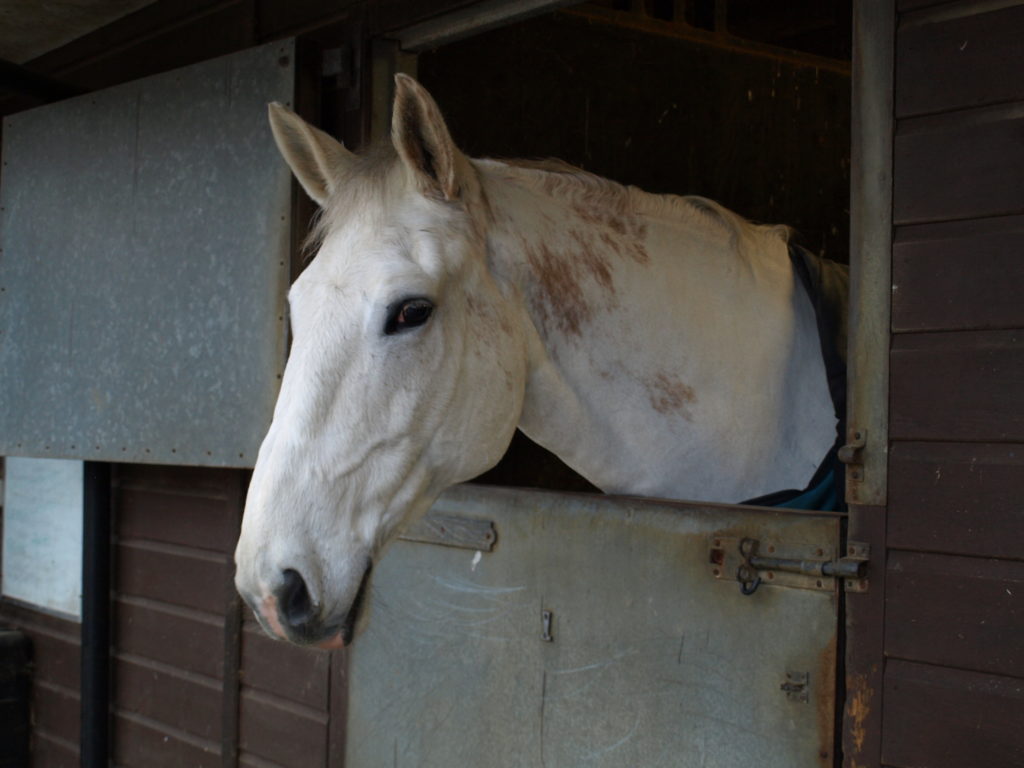
“It’s actually quite difficult to find a police horse. We put an advert out on Facebook and this lady got in touch,” Kat tells me.
“She said, ‘I’ve got a horse. I don’t do much with him and he’s wasted with me. Do you want to come and try him?’”
As I stroke his face, Hamilton nuzzles in my pocket. He has been spoilt down in Surrey and is always looking for treats.
This is his second week on the yard, and he has four more to go. After this six-week trial, he will be assessed and, if he’s up to scratch, he’ll begin his two-year training to become a police horse.
In the meantime, Hamilton must follow in the hoofprints of older horses. Rubin is one such role model and at the ripe old age of 19, he’s been on the yard for 15 years.
“He’s a good nanny for the other horses,” Kat explains.
Rubin is tucking into lunch as we approach his stable, but he pops his head out to say hello. He will be retired soon, hopefully to a private home, although Kat would love to take him home herself.
“He’s such a great police horse. He’s worth his weight in gold,” she tells me, stroking his muzzle.
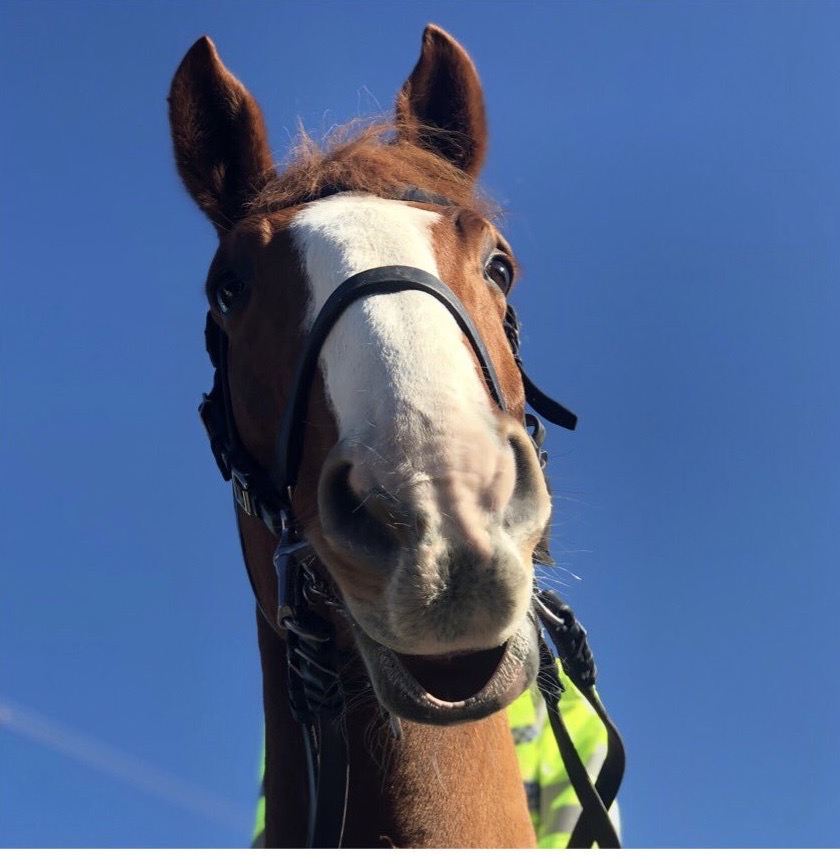
(Photo: SWP)
There are seven other horses in the section. Drummer and Bodie are on patrol in Swansea, but I meet Max, Bailey, Blue, Charlie and Marley.

“Blue is such a friendly horse, he’s great for the community work we do,” Kat tells me. “But he’s only eight so he still likes to chew things, like a toddler.”
“We’ve had some young people from youth offending come down. Sometimes they’ve had a negative experience with the police, so for us to talk about what we do through the animals is good. They really enjoy it.”
Three of the horses are “grey” (white, to you and me) and need a lot of scrubbing before they meet their public. How do you get poo stains out of white fur?
“Cleaning is a nightmare. We use purple shampoo, but it’s mainly a good bit of elbow grease,” says Kat.
Of course, the SWP have one dapper chappy. This is Max: a bay (dark brown) horse with a white moustache. Kat jokes that he’s been supporting Mo-vember.
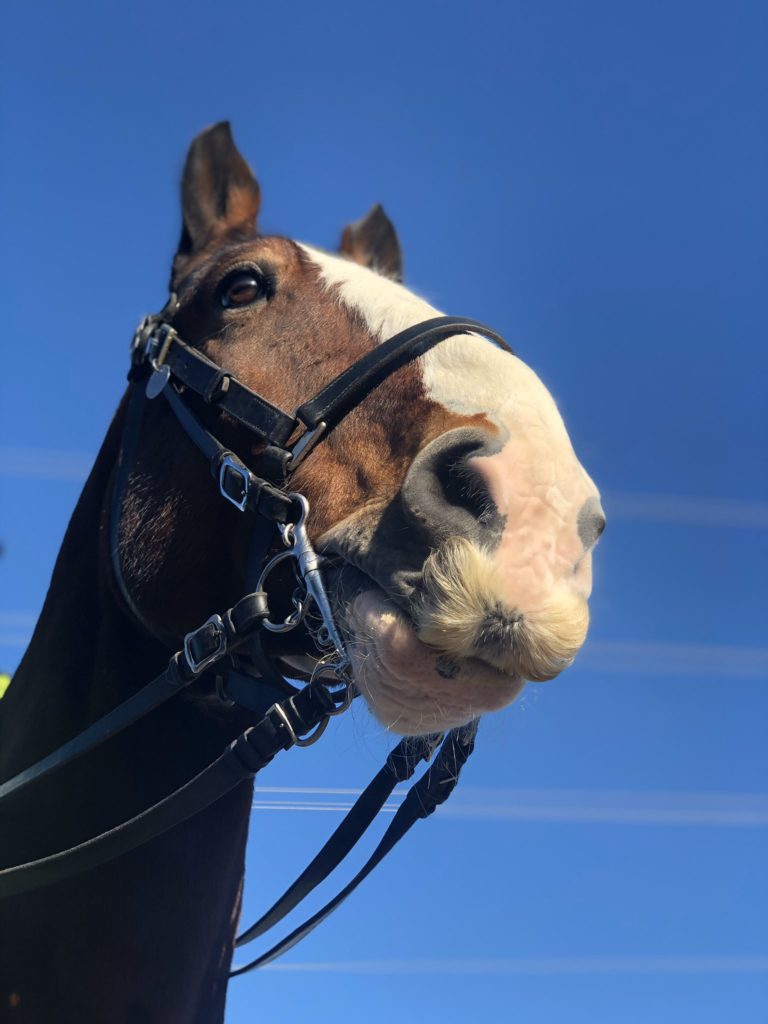
(Photo: SWP)
On their days off, the horses get turned out into the paddock, so they can have a roll and stretch their legs. Their Christmas break will have to wait until after the Boxing Day matches, but it’s not all bad news.
“We’ve actually got them a Christmas present this year. They’ve all got a nice new head-collar and lead rope!” says Kat.
She also plans to have a fancy-dress competition for all the officers and their mounts.
Out in the yard, the horses are finishing their lunch. Rubin looks out over his stable door and, as I close the gate behind me, one of them lets out a neigh of farewell.
